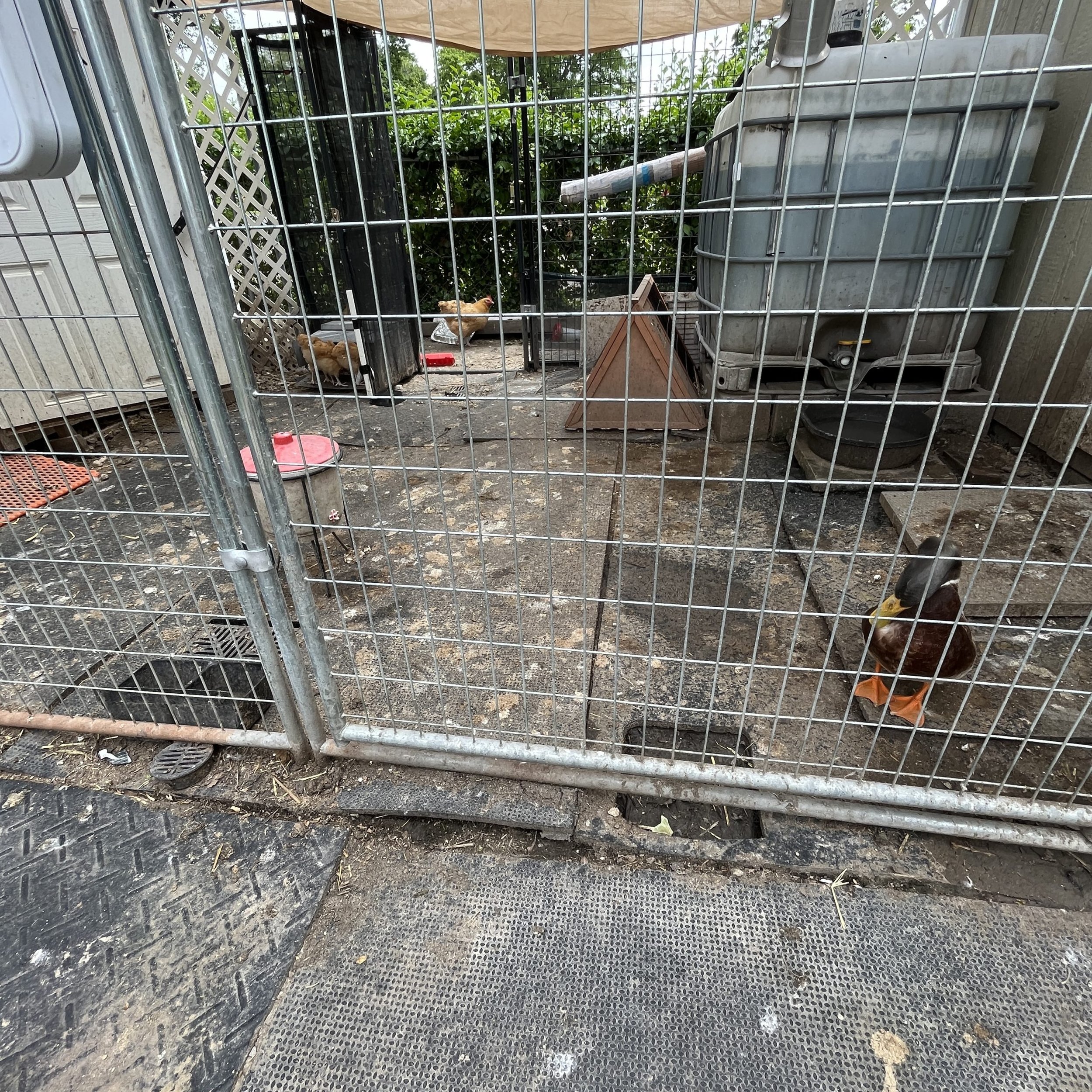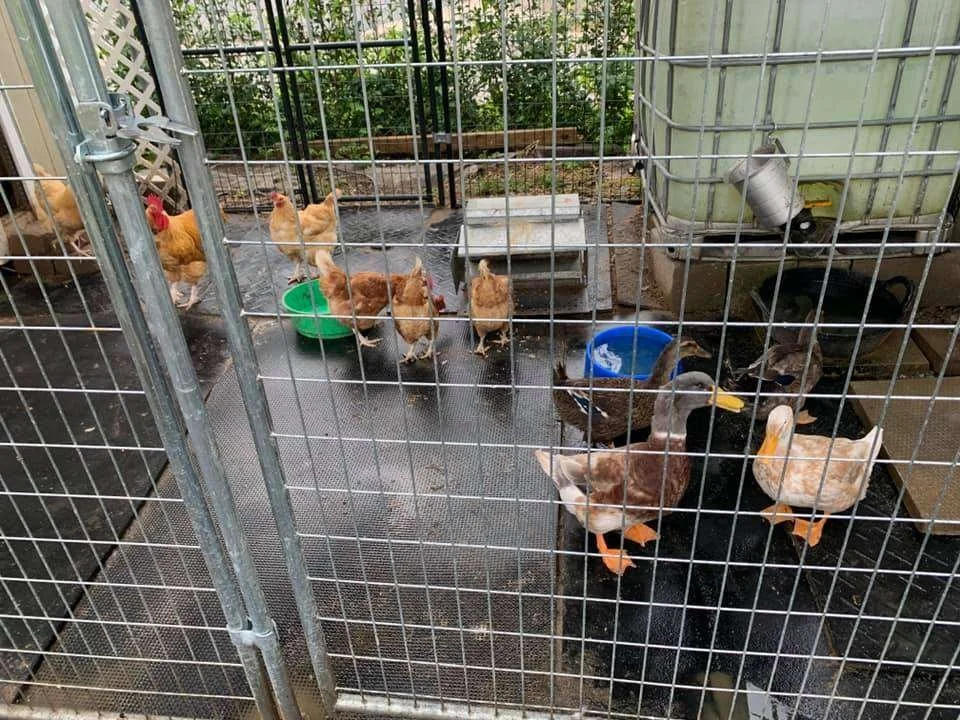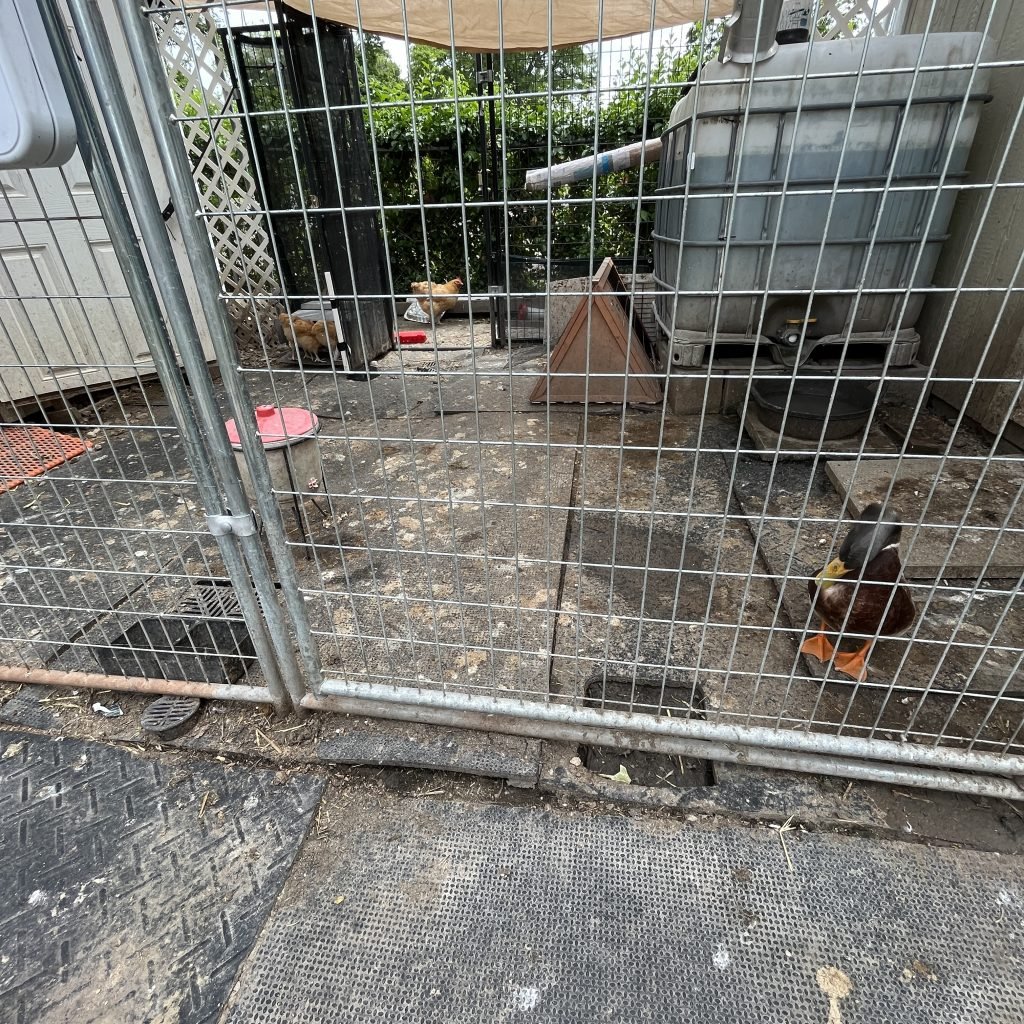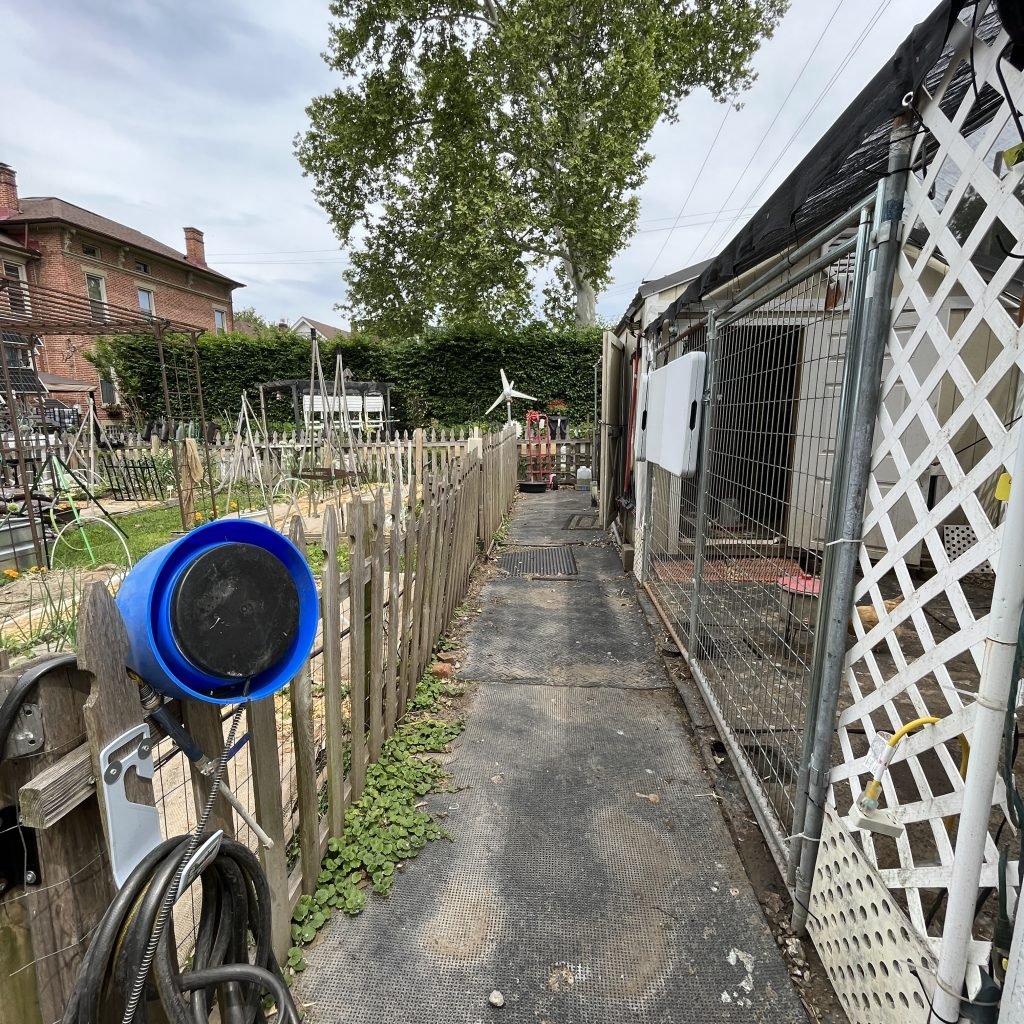Revisiting the Chicken/Duck Run in 2024
Ah, the poultry run between the livestock shed and the energy generation shed! What a delight it is. I think it's time for revisiting the chicken/duck run in 2024.
Why Revisit?
Well there are two main reasons I need to modify this system. The first being that when it works, it's great, but when it doesn't - like in the winter - it's bad. The second is that it is labor and resource heavy to maintain it with satisfactory sanitation.
The issue is the rubber horse mattes. They are terrific and are required by law in my City. They are easy to clean, impermeable and long-lasting. The weakness is that I cannot adequately collect the manure runoff in a sustainable way for long before they clog or at all in the winter.
I was beginning to think that I had to modify the understructure of the mattes in a way that allows for chickens and ducks to have more natural materials beneath their feet. Secondly, I need a system that will manage manure in a way that does not back up. I found my solution from an unlikely source.
Paris or Bust
My original proof of concept was the redesigned 19th Century sewers of Paris. Allow water and waste to flow through channels and down into a main sewer where I could treat wastes with diatomaceous earth and UV radiation to cure the hot, acidic manure in a covered cistern. Then I could reuse the manure as a potent nutrient resource.
Alas, my sewers were under-designed and would clog easily. Even an 8" diameter pipe and grated sumps placed strategically around the run were insufficient. In order for the system to work, I needed to engineer a 30cm (18") drop which meant a cistern five feet deep.
Obviously that is a lot of work. It would also be a pain to empty. It does not work well in winter either.
Tour of The Livestock Sheds
Clean and functional poultry run
Dysfunctional Run in winter
The bioPath to the north of the poultry run and the manure collection cistern
Leave It To The Kids
Because this BioTechnology Summer Camp is an applied STEM summer camp, the team also came up with a series of solutions to the messy wastes and backup problem. Scrap it. Create a hybrid system that benefits animals and humans.
Team Duck, Mezzacello BioTechnology Camp Students
I have known this was a brewing issue for a while now. After two winters I can see the many flaws in my plan. But it was my BioTechnology Summer Camp Kids that really drove the point home.
In a section of the camp called sustainable habitats, one team of kids ran a meticulous review of the run and readily identified these issues. I was very proud of them.
Because this BioTechnology Summer Camp is an applied STEM summer camp, the team also came up with a series of solutions to the messy wastes and backup problem. Scrap it. Create a hybrid system that benefits animals and humans.
Listen To The Kids
Their suggestion was to install long French Drains located at the matte edges beneath the mattes. This would allow a small gap covered in hardware cloth to let water and wastes drop in and flow. They encouraged me to seal the south ends end to prevent rodents. They encouraged me to cover the rubber horse mattes with river rock to allow the manure and to percolate down and stay clean at the same time.
The drains would empty straight into a single 25cm (10") deep, 8" trough with a grate over at the run side of the walkway. Lastly, I am impressed that they recognized quickly the three major flaws with my existing system. I was quite surprised when they delivered their analysis.
I actually think this analysis the kids did is quite genius. One of them even drew what they thought the biggest problem with the system was: Too many 90 degree turns in the pipes. That had never occurred to me, but I see now that they were absolutely correct.
Their calculations showed that this stone hybrid interface would require .5 cubic meters (7.2 cubic yards) of river rock to achieve. The french drains would stretch north to south beneath the mattes and I could repurpose the existing sewer into a straight run in the walkway with a 10cm drop at the east end. The run drains to the north towards the walkway so this makes great sense.
This straight run and the smooth drains with steeper runs and no turns or wells to clog will allow me to clear wastes and recycle them easier - even in winter. The stones will keep the birds healthier and control the mess. The entire system will be far more sustainable and sanitary.
My BioTechnology design cohort!
I will keep you posted on the progress. Follow me if you have a coop and want to see the CAD plans and the before and after. If nothing else, show this to your kids to remind them that kids are the future, and a bit of Applied STEM goes a LONG way!





